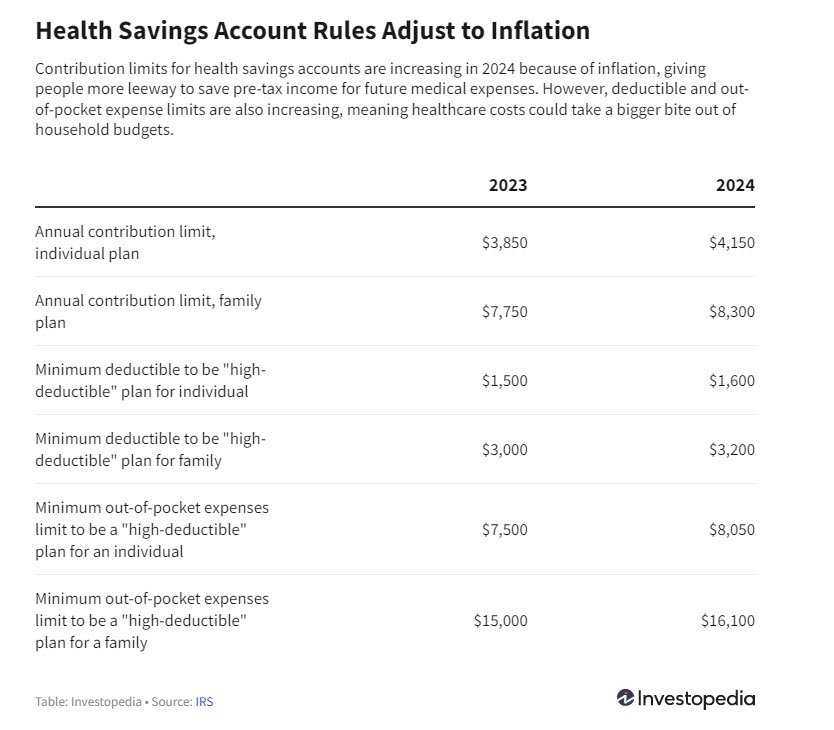The IRS limits how much you can put in a tax-advantaged health savings account each year, and that amount is adjusted every year to account for inflation. Surging inflation means that contribution limits have risen 7.8% for people with healthcare plans covering individuals, and 7.1% for families, the IRS announced in late April.1

Health savings accounts give people and their employers a way to save money that can later be withdrawn to cover qualified medical expenses.2 Any contributions made to your HSA are deducted from your income for tax purposes, saving you money at tax time, and any interest or earnings you get from your HSA are also tax-free.
You’re only eligible for an HSA if you have a high-deductible health plan as defined by the IRS—that is a plan that requires you to spend large amounts of money out of your own pocket before insurance pays anything.1
Inflation adjustments are a double-edged sword for HSA contributors, since while the contribution amount has increased, so too have the requirements for deductibles and out-of-pocket expenses. That means health plans must be less generous in order to qualify as a “high-deductible health plan.”
The change in maximum contribution levels won’t affect most people, those with HSAs typically contribute far less than the maximum anyway, according to a 2021 analysis by the Employee Benefits Research Institute.3
However, the increased limits are an opportunity for people who want to take full advantage of their HSAs. Experts say making maximum contributions to an HSA can pay off, especially if you anticipate having significant medical expenses in the future. Unlike with Flexible Spending Accounts, you can keep the money in your HSA if it hasn’t been spent by the end of the year.
This article was originally published in Investopedia on May 31, 2023, written by Diccon Hyatt.
2. Image courtesy of iStock
Investopedia requires writers to use primary sources to support their work. These include white papers, government data, original reporting, and interviews with industry experts. We also reference original research from other reputable publishers where appropriate. You can learn more about the standards we follow in producing accurate, unbiased content in our editorial policy.
Article Sources
1. Internal Revenue Service. 26 CFR 601.602 Tax Forms and Instructions
2. Internal Revenue Service. Publication 969 (2022), Health Savings Accounts and Other Tax-Favored Health Plans
3. Employee Benefit Research Institute. Trends in Health Savings Account Balances, Contributions
Spectrum Wealth Management, LLC is an investment adviser registered with the U.S. Securities and Exchange Commission. Registration does not imply a certain level of skill or training. Additional information about Spectrum’s investment advisory services is found in Form ADV Part 2, which is available upon request. The information presented is for educational and illustrative purposes only and does not constitute tax, legal, or investment advice. Tax and legal counsel should be engaged before taking any action. The opinions expressed and material provided are for general information and should not be considered a solicitation for purchasing or selling any security.